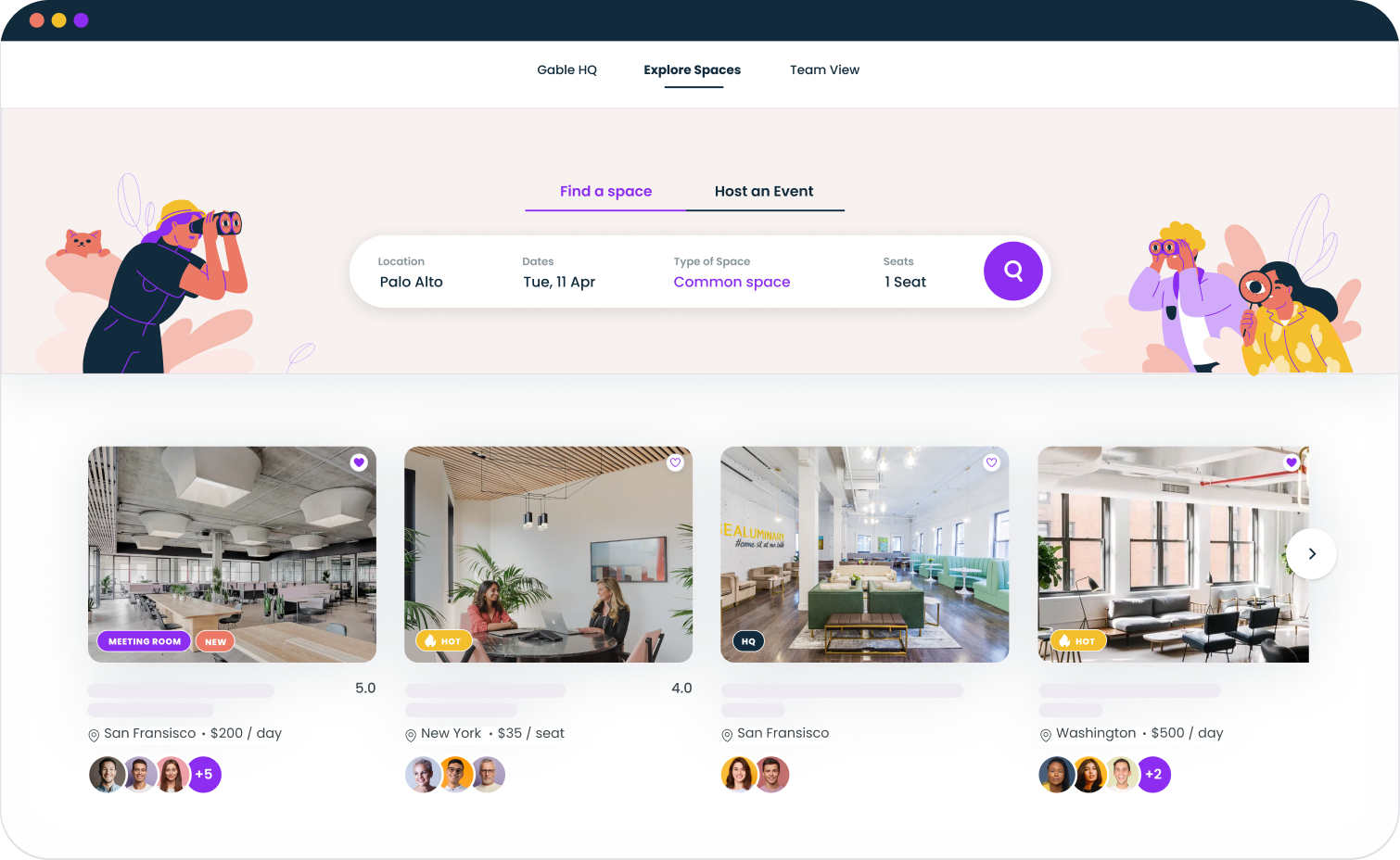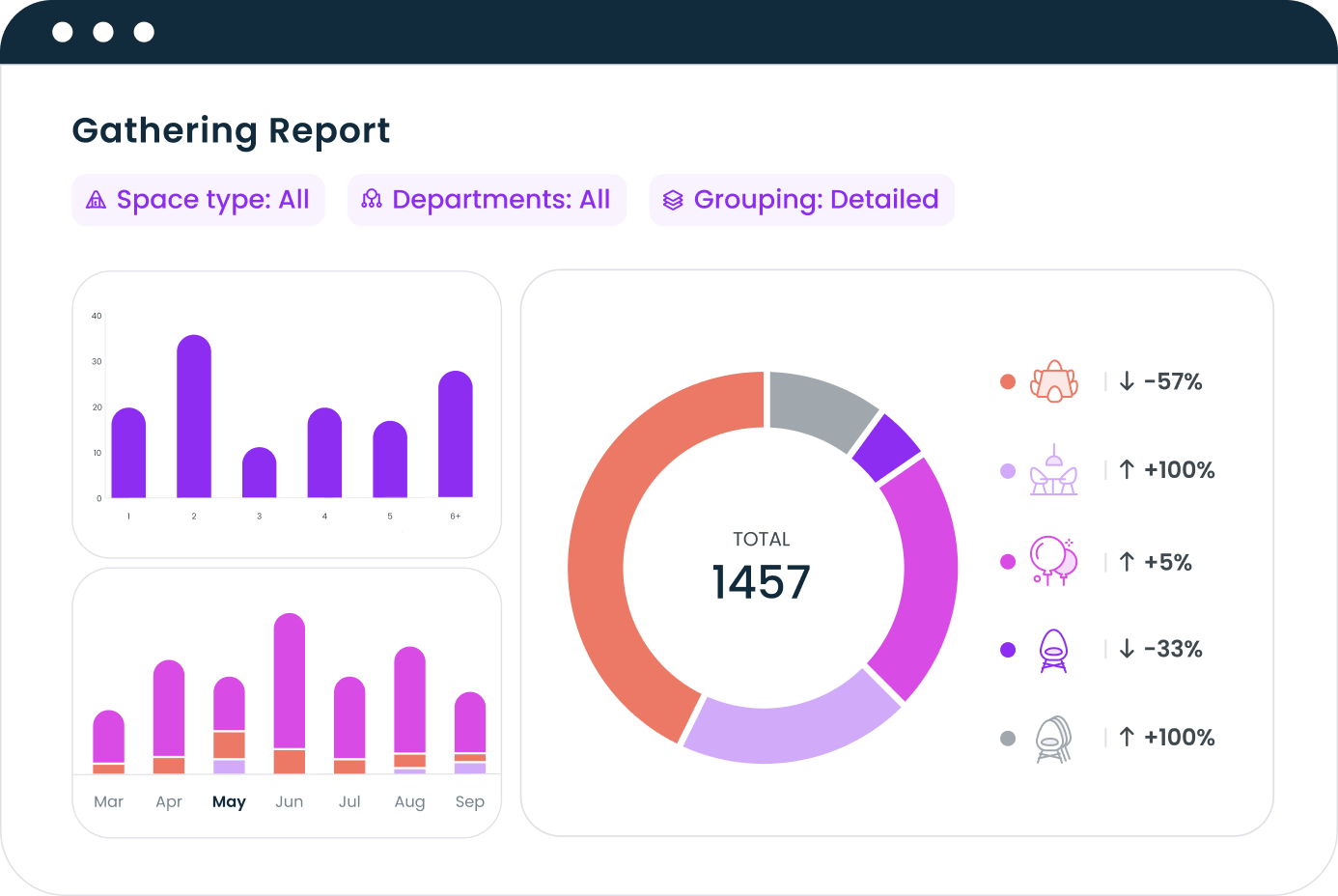Planning a company holiday party or end-of-year celebration shouldn't feel like a second full-time job. But if you've ever been stuck comparing venue quotes at 11 PM or frantically messaging your team about dietary restrictions two days before the event, you know the reality: corporate event planning can quickly spiral into chaos.
Here's the truth: end-of-year events don't have to be stressful. With a solid plan, the right systems, and a little help from tools built for this exact purpose, you can pull off a memorable gathering without losing your mind in the process.
This guide walks through everything you need to know to plan a successful company end-of-year event, from early logistics to day-of execution, whether you're coordinating a 15-person team dinner or a 200-person year-end celebration across multiple locations.
Start Planning Earlier Than You Think
The biggest mistake people make with end-of-year events? Waiting too long to start planning.
November and December are peak months for corporate gatherings, which means venues book up fast and caterers get slammed. If you're planning an event for late December, you should ideally start planning in October—or even earlier if you're working with a larger group or need a specialized venue.
Here's a rough timeline to follow:
8-10 weeks out: Lock in your date, finalize headcount estimates, and start venue research.
6-8 weeks out: Book your venue and confirm any vendors like caterers or AV support.
4-6 weeks out: Send save-the-dates and collect RSVPs. Finalize the agenda and any special programming.
2-4 weeks out: Confirm final headcount with the venue, send reminders to attendees, and handle logistics like dietary needs and travel arrangements.
1 week out: Do a final walkthrough (if possible), confirm day-of contact info with vendors, and prep any materials or signage.
The earlier you start, the more options you'll have and the less you'll pay. Waiting until the last minute doesn't just limit your choices—it also drives up costs as venues and vendors charge premium rates for late bookings.
Nail Down the Basics First
Before you get into the fun stuff like themes and menus, you need to answer a few fundamental questions:
What's the purpose of this event? Is it a casual thank-you gathering, a formal year-end celebration, or a mix of socializing and team building? Your purpose will shape everything from the venue type to the tone of your invitations.
Who's invited? Are you hosting the entire company, a single department, or regional teams? The size and makeup of your guest list will determine the type of space you need and how you approach logistics.
What's your budget? Be realistic about what you can spend per person, including venue rental, food and beverage, any entertainment or activities, and incidentals like transportation or decorations. A clear budget helps you make decisions faster and avoid overspending.
What's the vibe? Formal sit-down dinner? Casual cocktail hour? Afternoon team outing? The format matters, especially if you're trying to accommodate different work styles or preferences.
Once you have clarity on these basics, the rest of your planning gets much easier.
Finding the Right Venue (Without Losing Your Mind)
Venue hunting is often the most time-consuming part of event planning. You're juggling availability, capacity, location, price, and whether the space actually feels right for your team.
For hybrid or distributed teams, venue logistics get even trickier. You might need to book multiple locations across different cities or find a spot that's accessible for people traveling in from other regions.
This is where having access to a curated network of venues can save you hours of research and back-and-forth emails. Gable On-Demand gives you access to thousands of high-quality event spaces, from private dining rooms to full-scale event venues, with transparent pricing and streamlined booking. You can search by location, capacity, and amenities, and either book instantly or work with Gable's concierge team to negotiate on your behalf.
When evaluating venues, here's what to look for:
Capacity: Make sure the space comfortably fits your headcount. A room that's too small feels cramped; a room that's too big feels empty.
Location: Choose a spot that's easy to get to for most attendees. If you have people flying in, prioritize proximity to hotels or public transit.
Amenities: Does the venue provide AV equipment, tables and chairs, or catering? The more that's included, the fewer vendors you'll need to coordinate. If you're looking for conference room technology that supports hybrid attendees, make sure the venue can accommodate both in-person and virtual participants.
Flexibility: Can you adjust the layout? Is there a backup plan if the weather doesn't cooperate (for outdoor spaces)? Flexibility matters, especially as your headcount shifts.
Vibe: Does the space match the tone you're going for? A slick downtown loft feels very different from a cozy neighborhood restaurant, and both can work depending on your goals.
If you're sourcing venues on your own, plan to visit at least two or three options in person before committing. Photos can be misleading, and nothing beats seeing the space with your own eyes.

Stop juggling spreadsheets and vendor emails. Gable On-Demand connects you with thousands of vetted event spaces—instantly bookable for your upcoming events.
Explore Gable On-Demand
Hybrid and Multi-Location Events: A Different Challenge
If your team is distributed across multiple cities, you have two main options: bring everyone to one central location, or host simultaneous gatherings in each region.
Centralized events create a stronger sense of connection and make it easier to coordinate programming, but they also come with higher costs (travel, lodging, larger venue) and logistical complexity. Regional events are more affordable and accessible, but require more planning bandwidth since you're essentially organizing multiple events at once.
Here's how to approach multi-location events:
Standardize where it matters. Use the same agenda structure, branding, and key programming across all locations so it feels like one cohesive event, even if people are in different cities.
Empower local leads. Assign a point person in each region to handle venue selection, day-of logistics, and attendee communication. They know the area best and can move faster than someone coordinating remotely.
Use tools to stay organized. Managing multiple events across different cities is nearly impossible without a centralized system. Gable Events helps you create, promote, and track multiple gatherings from one dashboard, so you're not juggling spreadsheets and email threads.
Connect everyone virtually. Even if your events are happening in person across different locations, consider a shared virtual component—like a live video message from leadership or a simultaneous toast—to tie everything together. Our guide on how to run effective hybrid meetings can help you think through the technical setup.
The goal is to make every location feel special while maintaining a consistent experience across the board. For more on managing distributed teams, check out our deep dive on companies successfully implementing hybrid work models.
Why In-Person Gatherings Still Matter
With so much work happening remotely, you might wonder if end-of-year gatherings are worth the investment. The data says yes.
Research shows that in-person meetings generate 15-20% more ideas than virtual ones and build significantly stronger relationships between team members. Face-to-face interactions create trust, spark creativity, and help people feel more connected to their colleagues and the company as a whole.
End-of-year events aren't just about celebrating—they're about reinforcing culture, recognizing contributions, and building momentum for the year ahead. For teams that work remotely most of the time, these gatherings are often the rare moments when people can put faces to Slack handles and have conversations that go beyond project updates.
The key is being intentional about what you're trying to accomplish. Are you bringing people together to strengthen cross-team relationships? To recognize achievements? To set the tone for the coming year? Your purpose should shape every decision you make about the event.
Planning Activities and Programming That Actually Engage People
Once you've locked in your venue and logistics, the next question is: what will people actually do at this event?
The best end-of-year gatherings balance structure with flexibility. You want enough programming to give the event purpose and energy, but not so much that it feels like back-to-back meetings in a different location.
Here are a few approaches that work:
Kick things off with a shared moment. Whether it's a welcome toast, a message from leadership, or a fun icebreaker, starting together helps set the tone and signals that this is a special occasion.
Mix social time with meaningful activities. Consider incorporating team-building exercises, recognition moments, or collaborative workshops that align with your company values. If you're planning a multi-day offsite or retreat-style gathering, our guide on how to plan a company offsite or corporate retreat offers detailed strategies for structuring these longer events.
Leave room for organic connection. Some of the best conversations happen when people aren't following a script. Build in unstructured time for teams to catch up, explore the venue, or just relax together.
Close with intention. End on a high note—whether that's a group photo, a final toast, or a look ahead to the coming year. People remember how events end, so make it count.
If you need inspiration for specific activities, check out our list of 10+ activities for an amazing company offsite. From executive strategy sessions to creative workshops and volunteer projects, there are plenty of ways to make your gathering both fun and meaningful.
Logistics That Actually Matter
Once your venue is locked in, it's time to tackle the details that make or break an event.
Food and beverage: Confirm dietary restrictions and preferences early. Offer a mix of options (vegetarian, gluten-free, etc.) and be clear about what's included. If alcohol is involved, make sure there are plenty of non-alcoholic options and a plan for safe transportation.
Invitations and RSVPs: Send save-the-dates as early as possible, then follow up with formal invitations that include all the key details: date, time, location, dress code, and how to RSVP. Use a system that tracks responses automatically so you're not chasing people down manually.
Programming: A little structure goes a long way. Plan for a welcome moment, any remarks or toasts, and a clear endpoint. If you're doing team-building activities or awards, build those into the timeline so people know what to expect.
Day-of coordination: Assign a point person (or hire an event coordinator) to handle last-minute questions, greet attendees, and troubleshoot issues. This person should have contact info for all vendors and a printed copy of the agenda.
Follow-up: After the event, send a thank-you note to attendees and gather feedback. Ask what worked, what didn't, and what they'd like to see next time. This intel will make your next event even better.
The logistics might not be glamorous, but they're what separate a smooth event from a stressful one.
Use the Right Tools (or Prepare to Drown in Details)
Event planning involves a lot of moving parts: guest lists, venue contracts, catering details, RSVP tracking, budget management, and communication across multiple teams. Trying to manage all of this in email and spreadsheets is a recipe for mistakes and burnout.
Using a platform like Gable Events consolidates everything into one place. You can create events, manage RSVPs, send automated reminders via Slack or email, and track attendance and feedback after the fact. If you're booking an external venue, Gable On-Demand connects you with vetted spaces and handles negotiation and booking logistics, so you're not starting from scratch every time.
The right tools don't just save time—they reduce stress and help you avoid costly mistakes like double-booking a venue or forgetting to send a critical reminder. For teams managing hybrid work software across multiple locations, having everything in one integrated system makes coordination infinitely easier.
Manage RSVPs, send reminders, and track attendance—all in one place. Gable Events takes the chaos out of coordinating company gatherings.
See how it works
Your End-of-Year Event Planning Checklist
Use this checklist to stay on track and make sure nothing slips through the cracks.
8-10 Weeks Before the Event
- ☐ Define the purpose and goals of the event
- ☐ Set a preliminary budget
- ☐ Choose a date and time
- ☐ Estimate your headcount
- ☐ Start researching venues (use Gable On-Demand for curated options)
- ☐ Identify any special requirements (AV, catering, accessibility needs)
6-8 Weeks Before the Event
- ☐ Book your venue
- ☐ Confirm catering and dietary accommodations
- ☐ Hire any additional vendors (entertainment, transportation, AV support)
- ☐ Finalize the event agenda and programming
- ☐ Create a communication plan for invitations and updates
4-6 Weeks Before the Event
- ☐ Send formal invitations with RSVP tracking
- ☐ Promote the event internally (email, Slack, Teams, etc.)
- ☐ Collect dietary restrictions and accessibility needs
- ☐ Finalize any team-building activities or special programming
- ☐ Confirm contracts and deposits with all vendors
2-4 Weeks Before the Event
- ☐ Send reminder emails to attendees
- ☐ Confirm final headcount with venue and caterer
- ☐ Finalize seating arrangements or space layout (if applicable)
- ☐ Prepare any signage, name tags, or printed materials
- ☐ Coordinate transportation or parking logistics
- ☐ Assign a day-of point person and brief them on responsibilities
1 Week Before the Event
- ☐ Send a final reminder with all event details
- ☐ Confirm delivery and setup times with vendors
- ☐ Do a walkthrough of the venue (if possible)
- ☐ Prepare a day-of timeline and contact list
- ☐ Confirm backup plans for any outdoor elements
Day of the Event
- ☐ Arrive early to oversee setup
- ☐ Greet attendees and vendors
- ☐ Troubleshoot any last-minute issues
- ☐ Take photos or designate someone to capture the event
- ☐ Stick to your timeline (but stay flexible if needed)
After the Event
- ☐ Send a thank-you message to attendees
- ☐ Collect feedback via survey or informal check-ins
- ☐ Review budget and actual expenses
- ☐ Document what worked and what didn't for next time
- ☐ Process final invoices and vendor payments
The Bottom Line
End-of-year events are a chance to celebrate your team, close out the year on a high note, and build the kind of connections that make work feel less like work. But they only work if you plan ahead, stay organized, and use systems that make logistics easier instead of harder.
Start early, lock in your venue, nail down the details, and lean on tools like Gable to handle the heavy lifting. Your team will appreciate the effort, and you'll actually enjoy the event instead of just surviving it.
See how Gable streamlines venue booking, event management, and team coordination—all in one platform.
Get a demo





.svg)





.svg)
















.svg)














